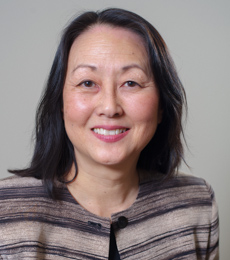Having Conversations, Building Capacity: A Snapshot of a Successful Research-Practice Partnership in Oregon
By Vicki Nishioka | October 17, 2017

Collaborative. Focused. A forum for policy and practice. These all describe the research-practice partnership between REL Northwest and the Oregon Leadership Network (OLN) alliance.
However, one of the most fitting adjectives is actionable—the work we did together had real-world applications that are still having a positive impact.
Our partnership started with shared concern about the disproportionate and overuse of exclusionary discipline in Oregon schools, as well as the desire to bring together researchers and practitioners so they could draw from each other’s strengths and address the aforementioned issues.
The OLN alliance (which consisted of representatives from school districts, the Oregon Department of Education, institutions of higher education, and several professional associations) wanted to change policies, not just practices, to increase equity and improve school climate.
REL Northwest’s focus was building the OLN alliance’s capacity to use data and providing the members with tools to help inform their decisions.
Results and Lessons Learned
Over five years, the researchers and practitioners worked together to use data to change policies and practices that decreased rates of suspensions and kept more students in school. Today, the OLN alliance members continue to make strides toward increasing equity for students throughout Oregon.
Here are a few lessons learned from this successful research-practice partnership:
Stay focused on "relevant" rather than "interesting"
As researchers, we can get so wrapped up in exploring issues that fascinate us, we lose sight of what practitioners need from us to better serve students. Simply stated, don’t get lost in the weeds.
Ensure messaging is targeted at the right audience
The OLN alliance members were critical to helping us understand when and how to talk about the issues with education leaders and the community. Their expertise enabled us to navigate the politics related to advancing new policies and changing practice.
Emphasize equal partnership
Research-practice partnerships thrive when they are based on mutual respect and cooperation—and when they leverage everyone’s expertise. From the beginning, we stressed that researchers and practitioners were equal partners who brought different perspectives and skills to the alliance work. By working together, we were able to complement each other’s skills.
Think big, start small
Reducing disproportionate discipline is a complicated, enduring, and often overwhelming challenge. The OLN alliance agreed the best strategy was to start small but set big goals and that it was important to use a shared process for making data-driven decisions. Each member used their data to select a strategy that addressed the specific needs of their district—and tried it out on a small scale to see if it worked. The takeaway: Research-practice partnerships should set short-term goals that are manageable and achievable, but their work should be scalable in the long term.
Have a consistent presence
Sometimes people are so busy addressing daily challenges, even though they want to tackle a big issue, it is difficult for them to do so. Research-practice partnerships can provide a vehicle for members to keep an ongoing focus on a problem of practice. By participating in the OLN alliance, members had dedicated time and space to address an issue they had identified. They also kept one another accountable to keeping the overall goal of reducing discipline disparities present in their work.
Relationships matter
A sense of community and collaboration are key elements of all successful research-practice partnerships. To build both, all stakeholders need to be invested in the work—and one another.
